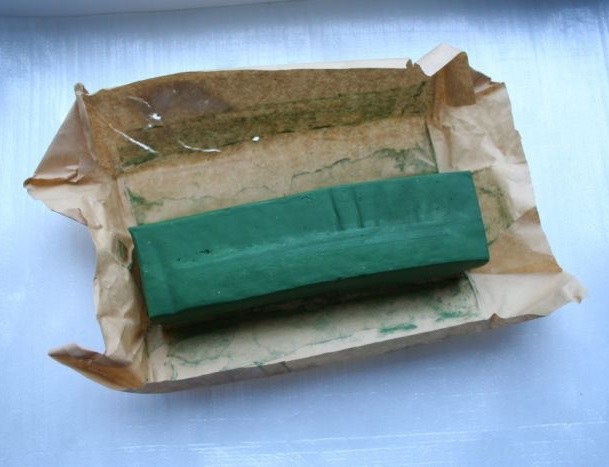What are the different types of pasta GOI
There are four types of paste GOI:
1. No. 4 is used for rough cleaning. Removing scratches after polishing abrasives.
2. No. 3 — for medium cleaning and obtaining a smooth matte sheen.
3. No. 2 and No. 1 — for polishing to a mirror surface.
Composition: chromium oxide, stearin, fat, silicagel, kerosene. Interest portion of the components, determine the number of a type of pasta.
Pasta GOI can be of different consistency: liquid, pasty and solid, resembling a fragile stone (hence the name "green stone"). Pasta GOI is in the form of a felt impregnated polishing wheels. But, as a rule, the bar is a turquoise-green color on the basis of chromium oxide.
Colour can be different shades, depending on the components components: binders, excipients, adjuvants and different percentages of chromium oxide. The rough variety has a light green color. The average grade is slightly darker. Fine paste — dark green or black with green sheen.
Application features
In the sale usually come in either fine or medium grade paste GOI. So you can hear a lot of complaints that grinding paste does not work. This is because not observed the order of precedence of sorts. And not every seller can explain what he has pasta on sale. It happens that after polishing with an abrasive, immediately want to get a mirror Shine. But to see positive results only after a long period of adjustment and consistency of application varieties. Starting, naturally, with # 4. For convenience, the paste can be diluted with kerosene or similar solvent.
When fine-tuning are also important fixtures on which to make pasta. It can be of wood, wrapped pile fabric, figured, specially prepared tools to access the recesses, holes and remote places of objects to be treated. In any case, you cannot put paste GOI Polish on the subject; if this happens after a long debugging process — it would be a shame to start all over again.
It should be noted that chromium oxide included in the composition of paste GOI, toxic. Getting on the skin, may cause dermatitis. And when swallowed, can cause poisoning. Also in the paste are often included toxic contaminants.
After polishing you need to wipe the treated subject with vegetable oil and then dry cloth. Further the product should be washed with water with detergent or liquid soap.
